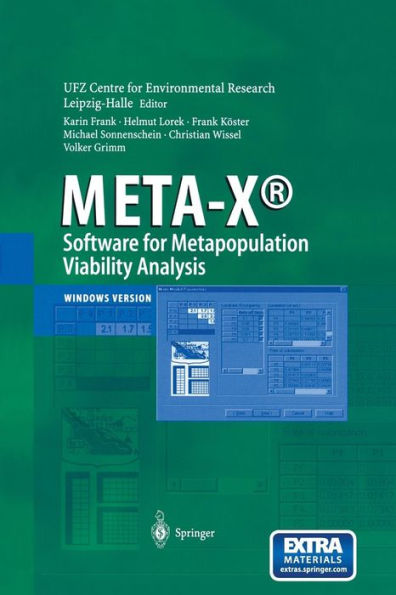META-X®-Software for Metapopulation Viability Analysis
Meta-X is a user-friendly computer program that allows students, teachers, and researchers to perform a metapopulation viability analysis i.e. to assess the extinction risk of (meta)populations on discrete, partially isolated patches of habitat, in a comfortable way. The CD comes with an extensive handbook which explains the basic concept of the program and takes you on a guided tour through a model experiment. It further provides the necessary scientific background on both metapopulation dynamics and population viability analysis.
1140677547
A special feature of Meta-X is that it supports comparative analyses of alternative scenarios. This predestines Meta-X to serve as an aid for decision making in conservation management and landscape planning. Furthermore, handbook and software together provide an invaluable help in research and teaching.
META-X®-Software for Metapopulation Viability Analysis
Meta-X is a user-friendly computer program that allows students, teachers, and researchers to perform a metapopulation viability analysis i.e. to assess the extinction risk of (meta)populations on discrete, partially isolated patches of habitat, in a comfortable way. The CD comes with an extensive handbook which explains the basic concept of the program and takes you on a guided tour through a model experiment. It further provides the necessary scientific background on both metapopulation dynamics and population viability analysis.
A special feature of Meta-X is that it supports comparative analyses of alternative scenarios. This predestines Meta-X to serve as an aid for decision making in conservation management and landscape planning. Furthermore, handbook and software together provide an invaluable help in research and teaching.
54.99
In Stock
5
1

META-X®-Software for Metapopulation Viability Analysis
195
META-X®-Software for Metapopulation Viability Analysis
195Paperback(Softcover reprint of the original 1st ed. 2003)
$54.99
54.99
In Stock

Product Details
| ISBN-13: | 9783642629068 |
|---|---|
| Publisher: | Springer Berlin Heidelberg |
| Publication date: | 03/23/2013 |
| Edition description: | Softcover reprint of the original 1st ed. 2003 |
| Pages: | 195 |
| Product dimensions: | 6.10(w) x 9.25(h) x 0.02(d) |
From the B&N Reads Blog
